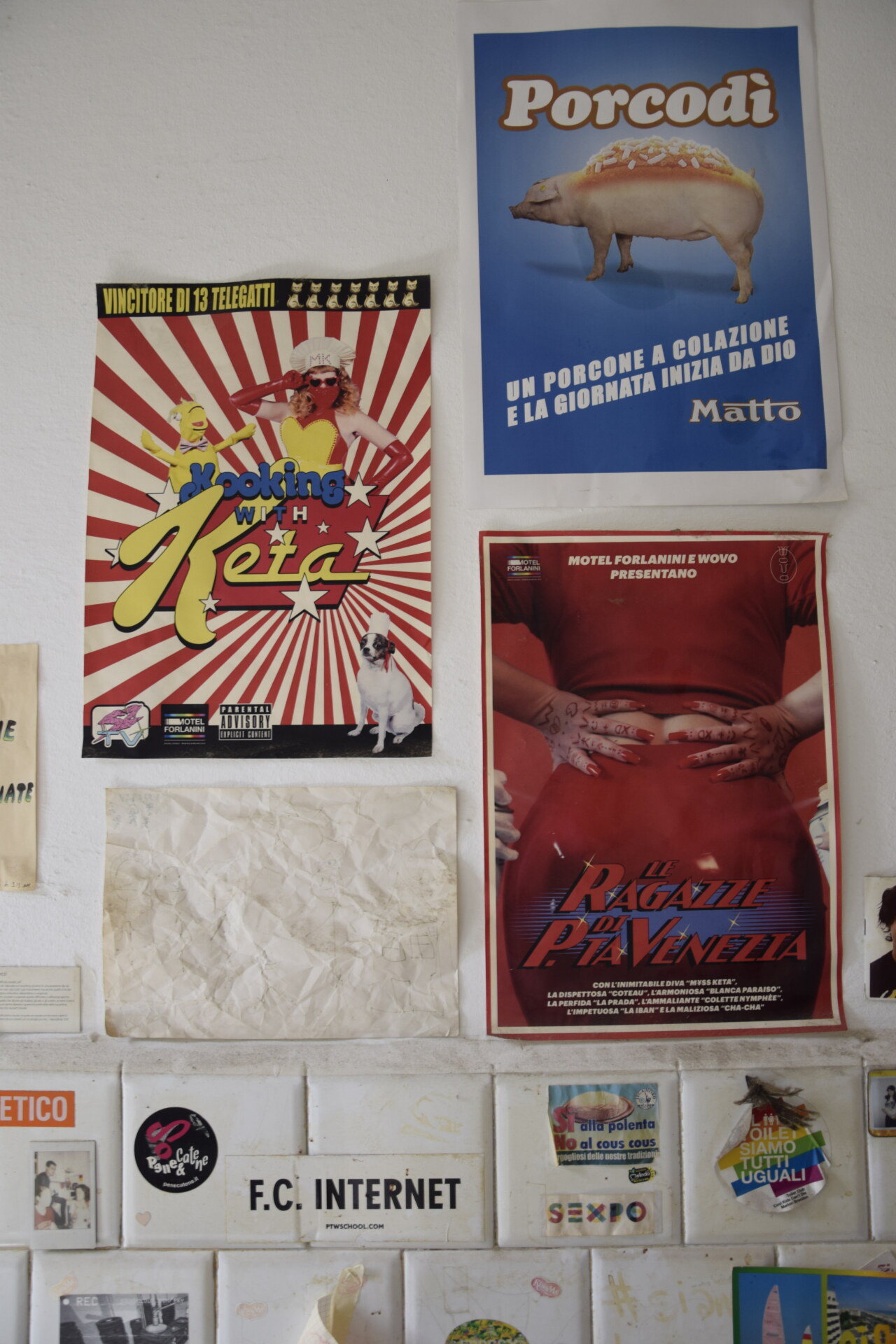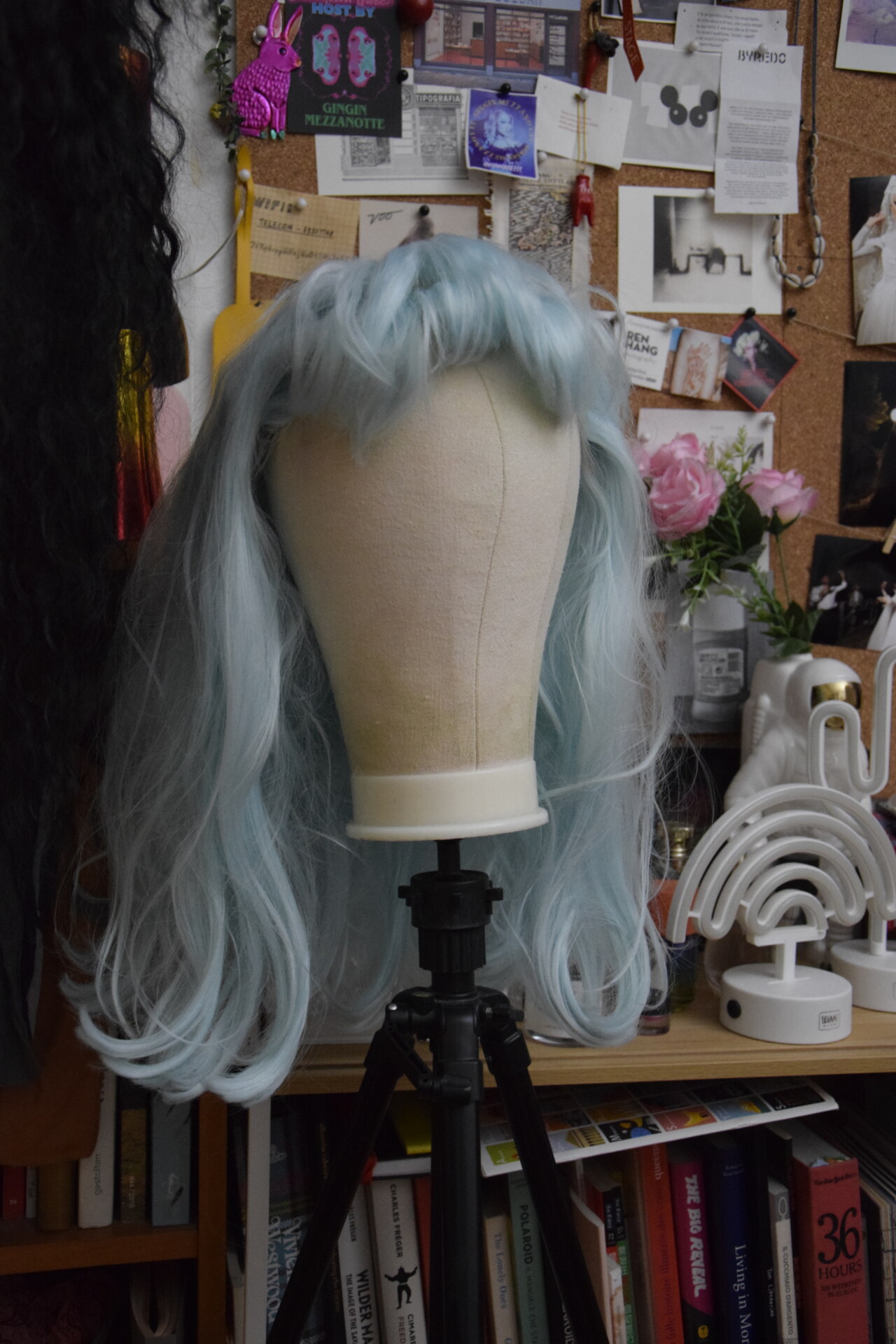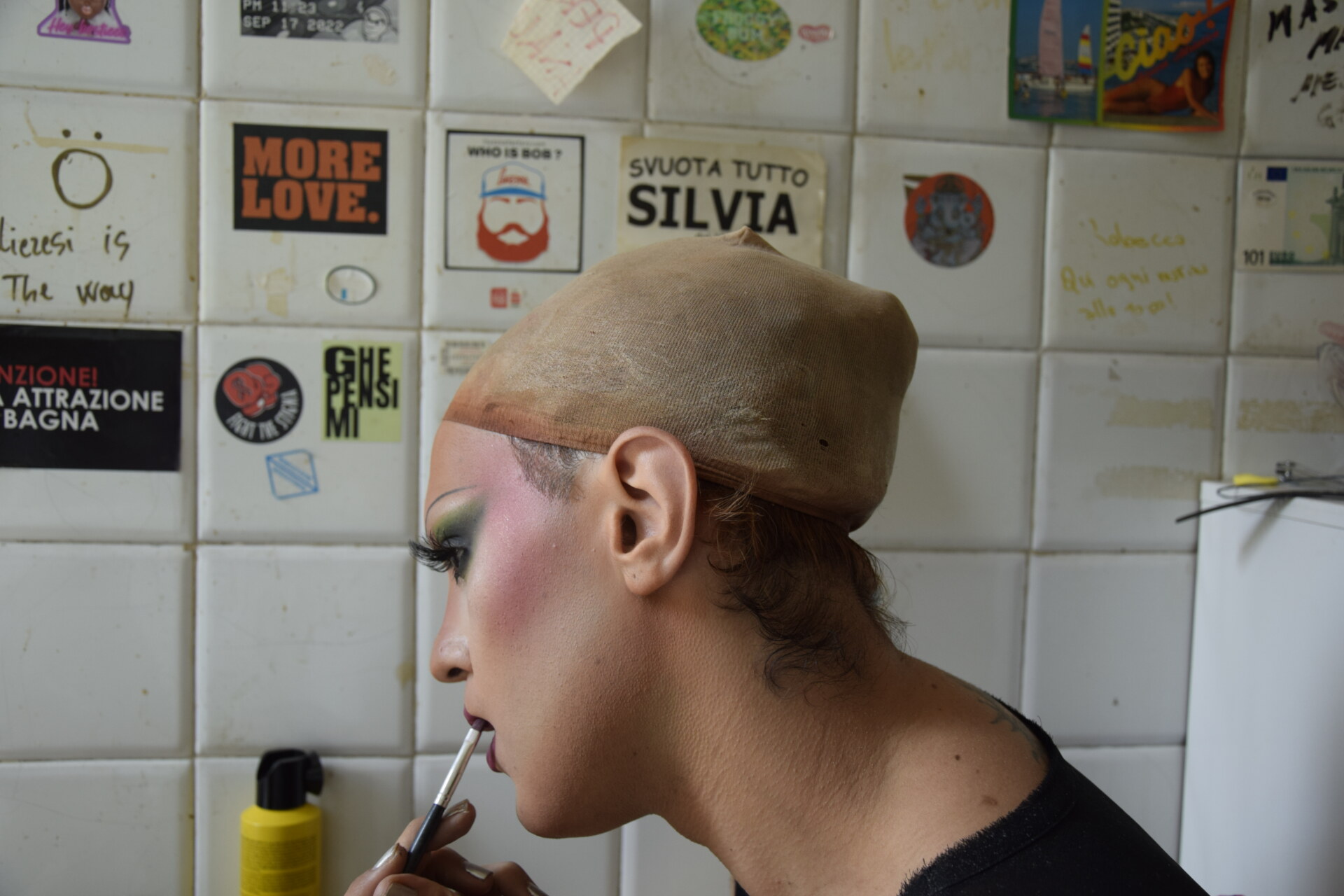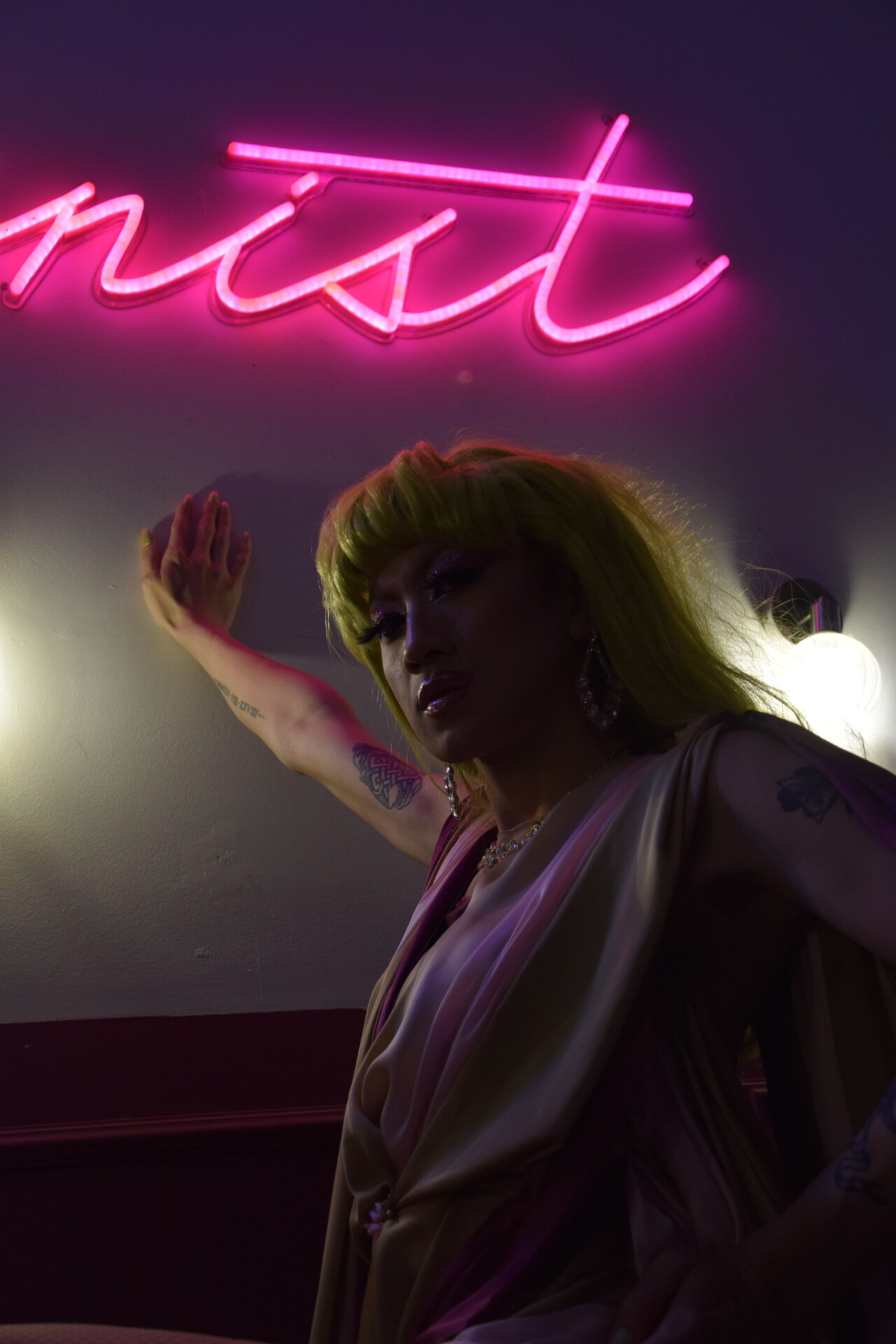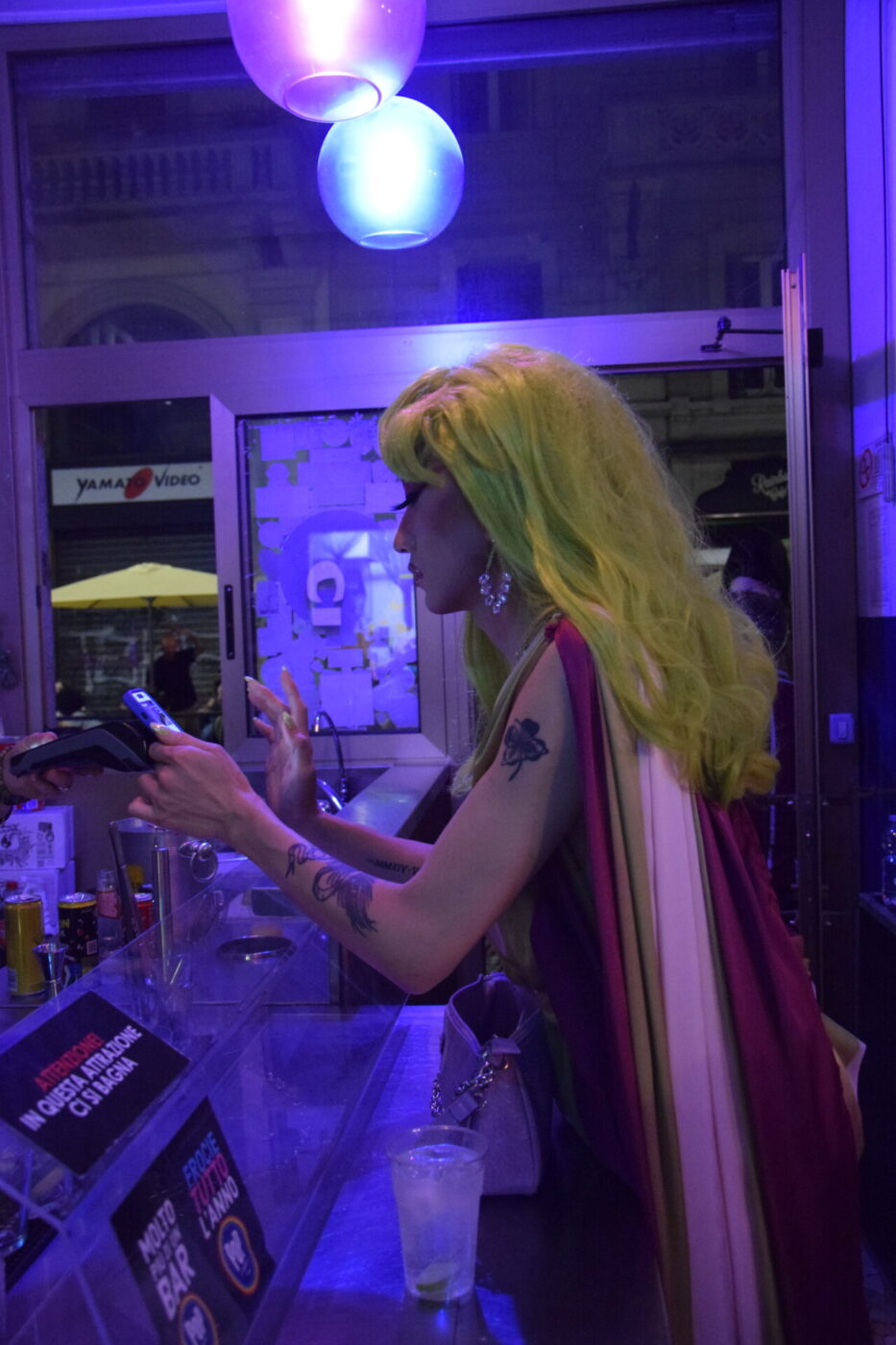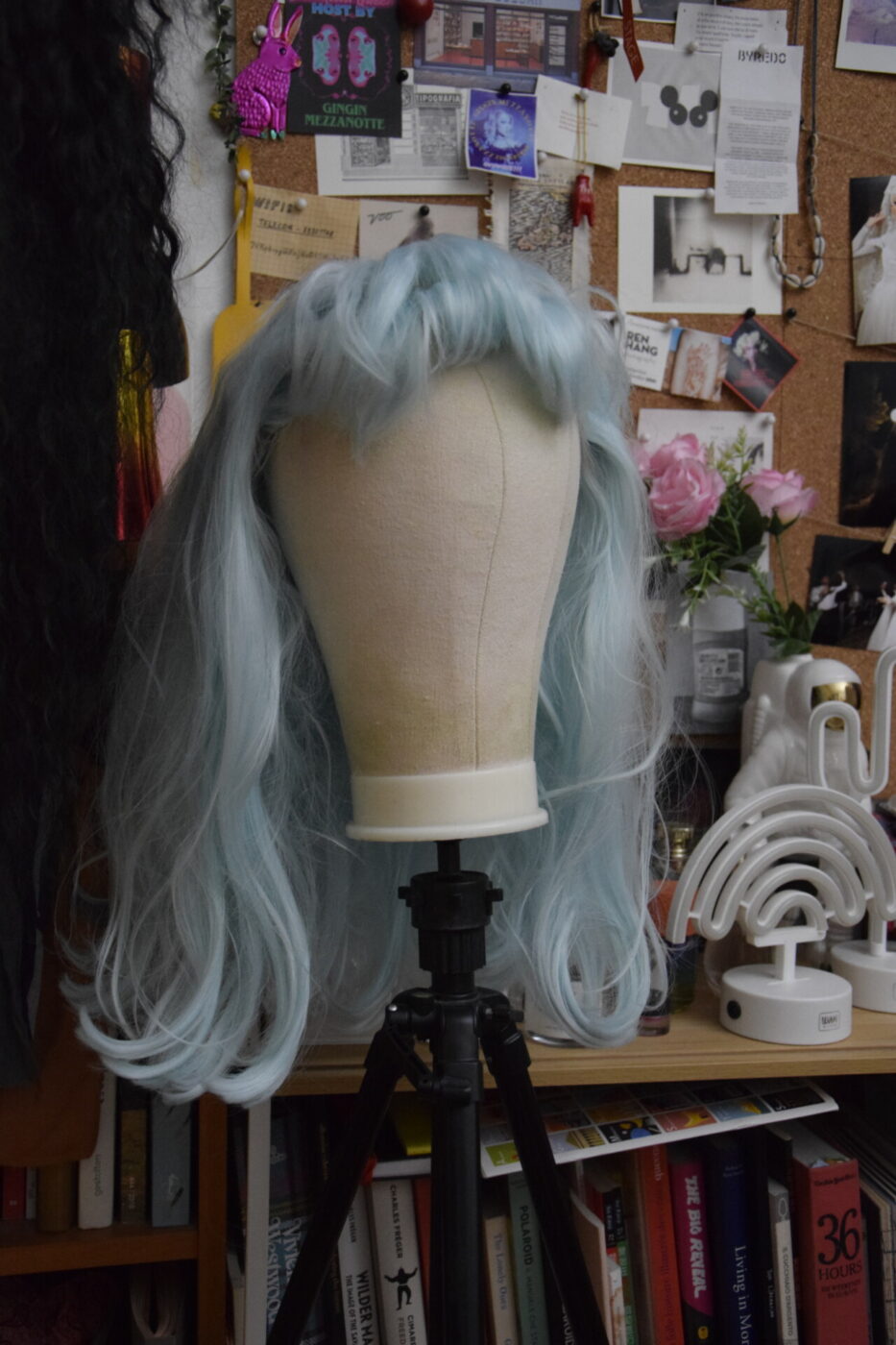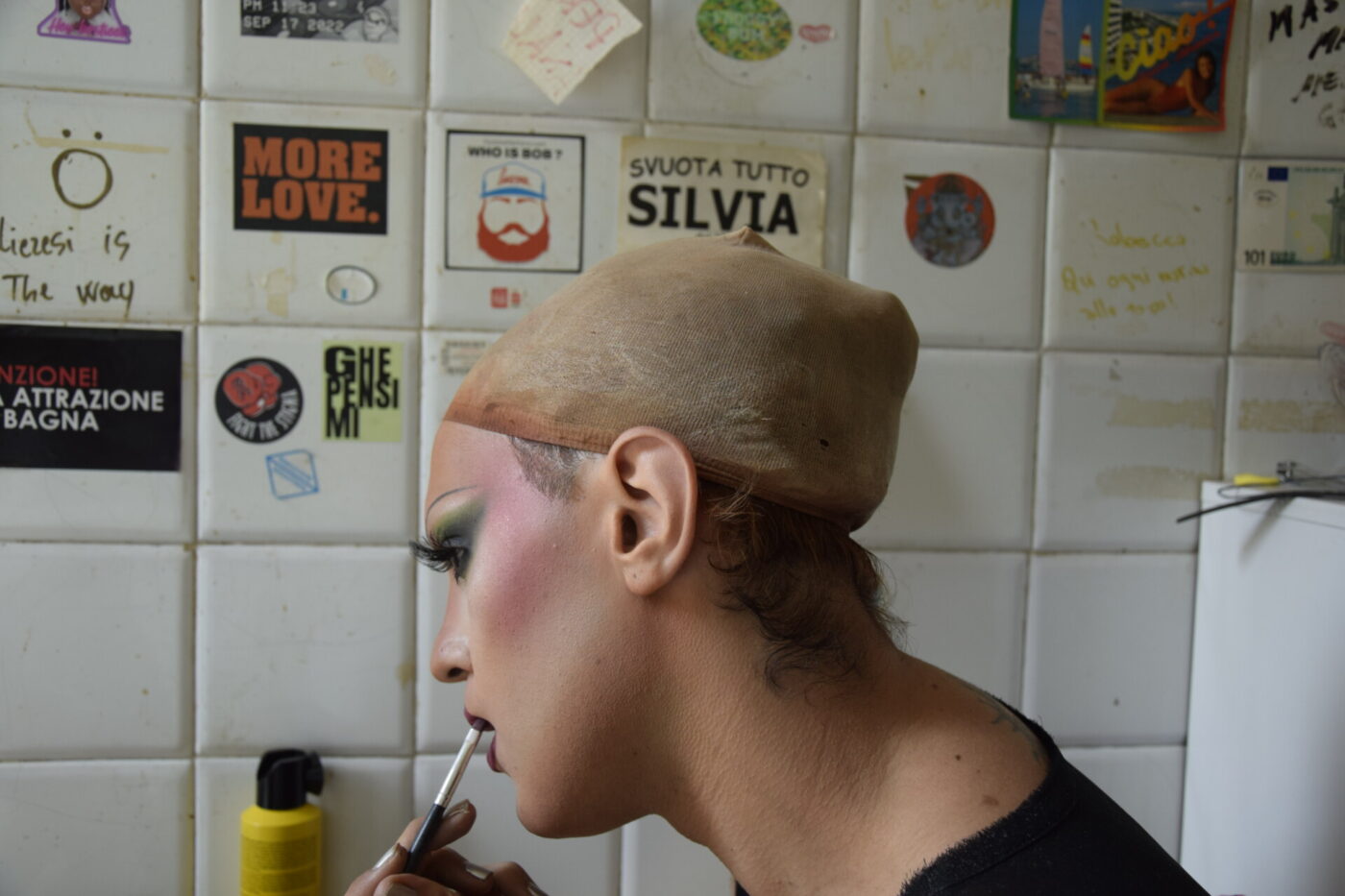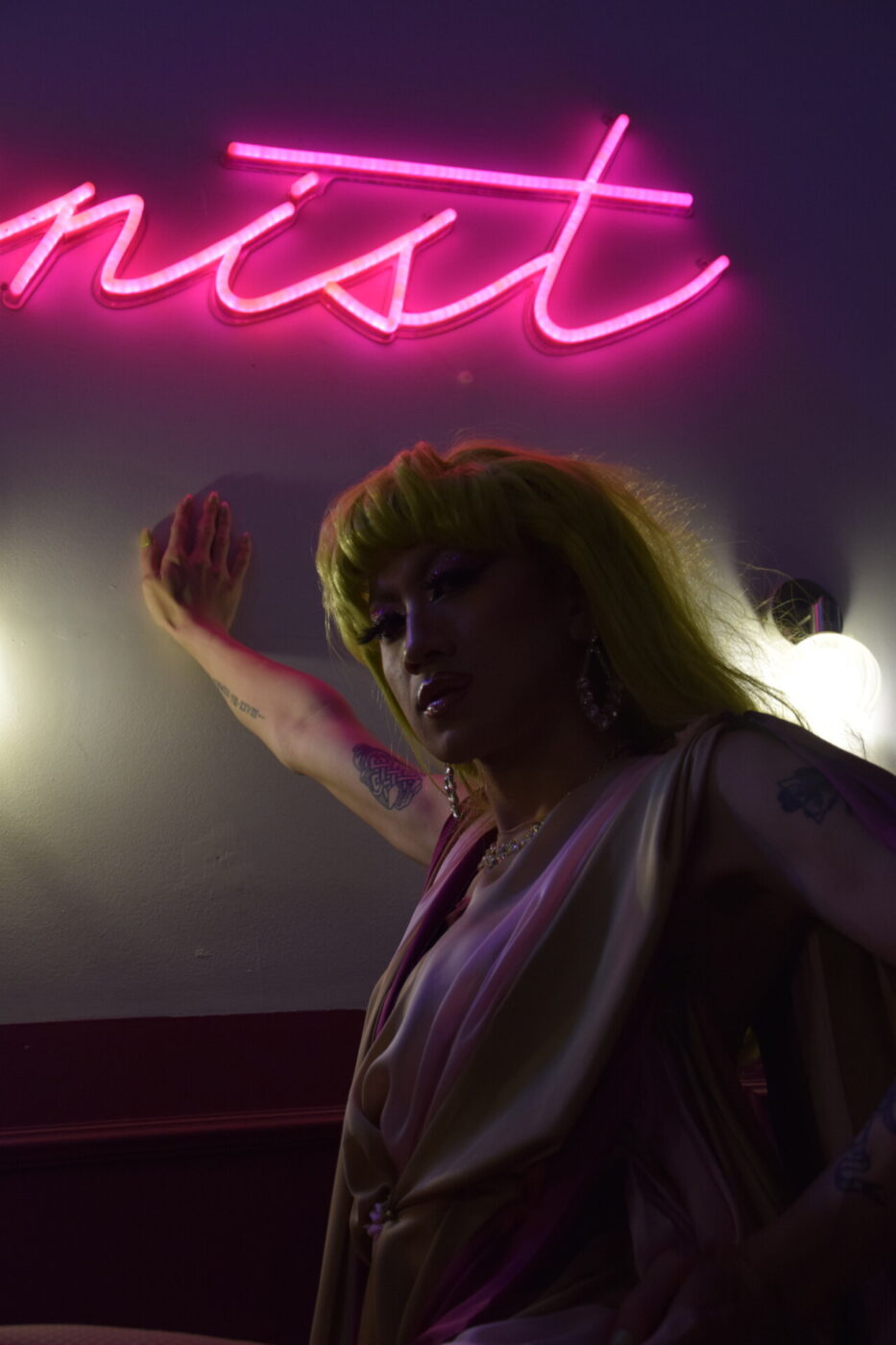In the queer community, expressing oneself authentically primarily involves claiming a space. This space within the drag community takes on various forms, from the vibrant subculture of the ballroom scene*, born from the streets, to venues where new identities are nurtured and shaped. These are places of transformation.
For La Trape, a drag performer originating from Milan’s Toilet Club, the transformative journey unfolds within the confines of her kitchen, located in Milan’s Porta Venezia. Here, the quietude of applying makeup is intermittently interrupted by the rhythmic bubbling of a moka pot, an intimate setting where she candidly shares, “I was born in isolation from others. The Toilet, when I worked there, was a very punk scene, and for me it was the space where I could have my moment of total explosion.”
Today, the Milan drag scene is punctuated with spaces where connections are fostered. At its core, there remains a fundamental ethos of inclusivity. As La Trape notes, the intersection between the drag world and the ballroom scene holds historical significance, rooted in a time when queer individuals provided refuge for kin who were rejected by their families, and seeking a sense of belonging. “At its base is the teaching of welcoming,” she says. She sits before a tiny table full of sponges, powder brushes, and cigarettes: her make-up corner. To her right, the wall is plastered with newspaper cuttings, holy cards, and posters hanging with a tape. It is a large queer manifesto, with the image of singer Myss Keta and the icons of Virgin Mary surrounded by stickers and pizza flyers. The space beckons friends to come, pull up a chair, and stay a while.
La Trape continues, “The ballroom scene revolves around rules, but rather than instructing you on what to do, it focuses on passing down an experience.” This is why training sessions, often associated with the ballroom scene, exist alongside it. These street events, in contrast to traditional ballroom gatherings, are open to all. Trape remarks, “They are undoubtedly riskier than ballroom events, especially in places like Milan, where incidents of homophobia, transphobia, and lesbophobia are more common.”
According to the Rainbow map, Italy is 34th out of 49 in the ranking of European countries by how LGBTQIA+ friendly they are. In this context, it is concerning to note that 1 in 4 LGBTQIA+ people still experience discrimination in their workplaces here. Additionally, 40% of homophobic episodes take place on the streets and often involve physical aggression. According to omofobia.org, between April 2022 and March 2023, Italy recorded 165 victims of aggression that reported homophobia cases–surely, there are countless more unreported ones.
Above and beyond this, Italy’s anti-queer policies–including not recognizing gay marriage or second parent status and barring same-sex couples from adopting children–make this country a hostile place to people who inhabit queer bodies. Milan stands out as a beacon of hope for Italy’s LGBTQIA+ community, being one of the more progressive and liberal cities in the country, and boasting a vibrant tradition of queer nightlife. However, episodes of discrimination persist, particularly as one ventures further from the city center, notably in the Porta Venezia district.
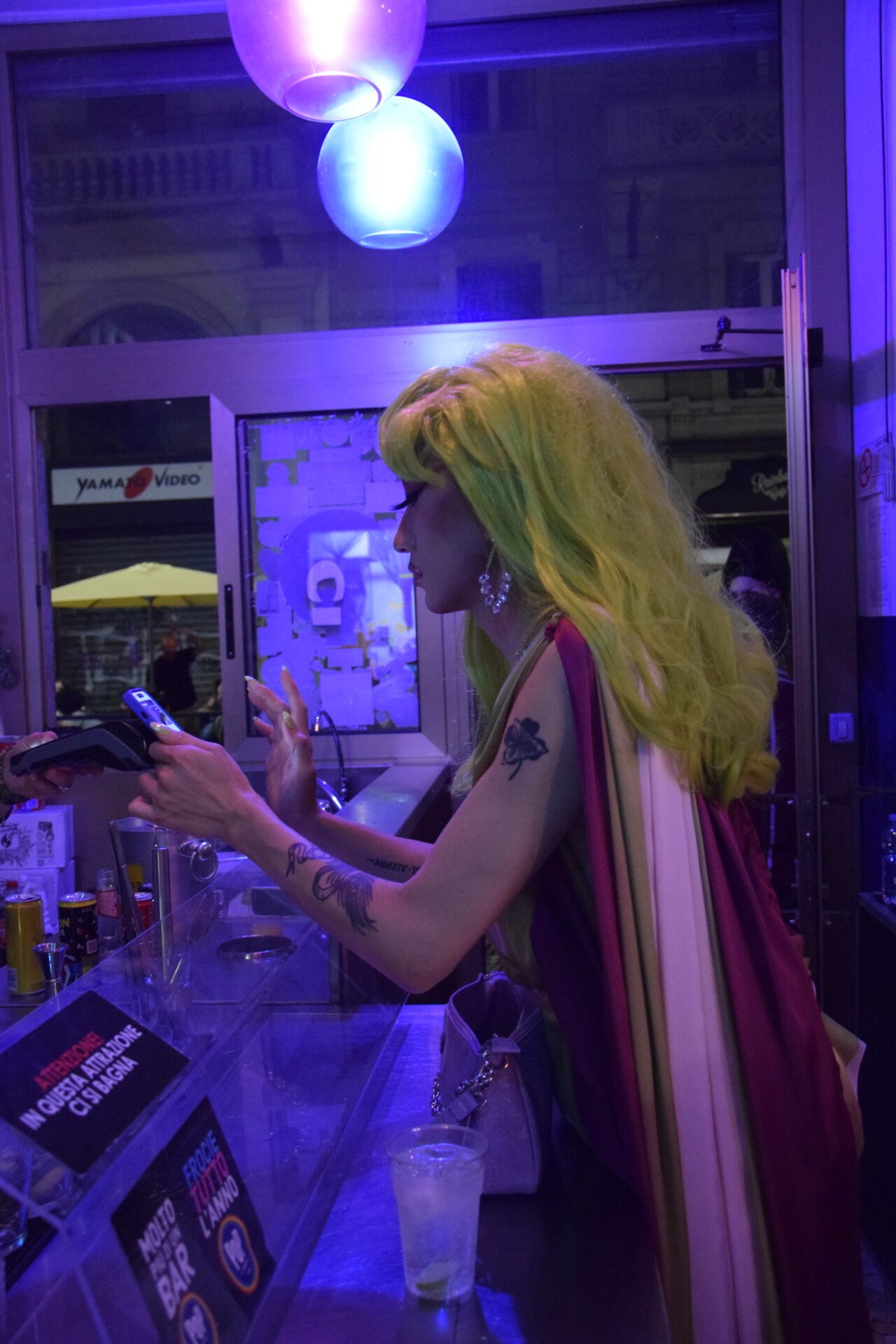
Gin Gin Mezzanotte with the name-giving gin & tonic
This is why having open training spaces–and safe spaces in general–is so paramount, especially here. The Toilet Club of Milan, a longstanding advocate for LGBTQIA+ rights and inclusion, emphasizes the importance of creating a welcoming and safe space for everyone. “These are essential spaces, particularly for reaching individuals who remain on the margins, such as trans individuals or undocumented immigrants—a demographic that the ballroom scene actively seeks to include. Anyone can take part in a training session; the only prerequisite is to approach it with the understanding that you are knowledgeable about what you are doing,” says La Trape.
Ballroom originated in a different era, when the distinction between drag and trans was less marked. As La Trape explains, “In ballroom, some individuals had the urge to embrace a dual identity, and being in drag meant expressing themselves as they felt in that particular moment.” The drag world isn’t an alternate realm; rather, it’s a meta-space inhabited by queer, unconventional identities that challenge the heteronormativity of our society. Within these newfound or adopted identities, queer language isn’t an attempt at mere translation; it’s a redefinition of a social lexicon previously constrained by traditional models. Beyond the boundaries of the queer world exists a rigid, unyielding norm that often gets imposed on an unchanging identity, particularly in matters of gender and sexuality. La Trape emphasizes that within the queer world, “drag serves as the language of liberation.”
“The vocabulary employed in drag reveals the extent to which a community faces marginalization and discrimination. When you enter a recognized context, it becomes necessary to acquaint yourself with the particular language of that environment. In contrast, within the drag community, individuals don’t feel compelled to learn a specific code of conduct, even though such a language exists and possesses a history that often makes more sense than others. Therefore, actions like wearing a wig* or performing a lip-sync* serve as a testament to the needs that individuals from the past have experienced, passed down, and often continue to live through.”
“Only to the outside eye can lip-sync seem cringe-worthy. But its meaning is also political and social,” Trape explains. “We are a marginalized community that does not have the same opportunities to tell our own experiences through music. So lip-syncing is about reappropriating another person’s words to say something about ourselves.”
Taipei-born drag queen Gin Gin Mezzanotte, who has been living in Italy since 2011, found her first inspiration in Japanese singer Shi’ina Ringo and Grace Chang, a Hong Kong actress of the 1950s. Of the latter, Gin Gin explains, “I was inspired by her lightness, by not taking herself seriously compared to those difficult years. When I saw those performances, I dreamed of one day being like that. These celebrities give you mirth, but, on a deeper level, also hope.” She welcomes me into her cute apartment in the south of Milan. Her bedroom looks like a fashion set, full of vibrant and colorful wigs and clothes.
In the drag universe, the choice of a name marks the initial step of transformation, as explained by Gin Gin: “Gin Gin draws inspiration from my favorite song, ‘Jing’ by Shi’ina Ringo, which narrates the duality and struggle between dreams and reality. Additionally, my fondness for Gin and tonic, which I always order two of, led to ‘Gin Gin.’ Midnight, on the other hand, symbolizes the enchanting moment of transitioning into a nocturnal persona.” Contrasting the fairy tale archetype where Cinderella assumes the guise of a scullery maid and returns to the margins of a power structure, Gin Gin’s transformation occurs at midnight, evolving into someone entirely different. Attire holds immense importance in the drag world, exemplified by the concept of the “reveal.”*

Gin Gin Mezzanotte snagging a snack at home
“It is true that the reveal is a stage gimmick used mainly to play for applause in a performance,” explains Trape. “But with it I am poking fun at the rigidity with which a person presents themselves in the ordinary world. It only takes a second and I change identity: identity is, therefore, changeable, liquid.” In the drag world, any element, including make-up and tucking*, can be a tool to unhinge the rigidity that society has imposed.
In her early days, Gin Gin was unfamiliar with the practice of tucking, “I even had to study how to do it, watching tutorials on YouTube.” But, while this practice is important to some drag queens and gender nonconforming individuals, it’s certainly not for all. Gender play does not absolutize the drag essence, as Trape explains, “For me, drag is not always about gender work, but about transformation, about wearing a mask. My drag, for example, can also become an alien. The moment you wear a mask, you have the need to step out of your everyday identity.”
The drag world teaches that appropriating one’s own aesthetic, even taken to excess, can help one tell one’s own story, through the body and beyond the body. “The sinuous forms of the female body that I recreate through padding, with a bra and sometimes on the hips, is a form of expression of what I have inside, of my artistic soul. Gin Gin and I are like Yin and Yang: we balance each other,” Trape echoes. Speaking drag means speaking a language of freedom of expression and being. “When I was younger, it was scary for me to bare myself,” she continues, “When I wear a mask today, it’s not me at that moment, so I have less trouble being vulnerable, I feel safe to tell my story, my truth. It’s therapeutic.”
*Drag Dictionary:
Ballroom: The term “ballroom scene” is used to describe the environment in which a ballroom house evolves. Originating in New York City during the 1960s to provide support for individuals in the LGBTQIA+ community who had been rejected by their families, it is defined by the presence of queer families known as “houses.” Each house possesses a genealogy composed of mothers, daughters, and individuals who enjoy participating in ballroom events. These events, somewhere between a party and a competition, serve as a means to foster connections.
Tucking: In drag and, in a broader sense, transgender parlance, it is the practice of hiding the testicles in the groin cavity while pulling the penis to the back. The result is to create the appearance of a female pubic area.
Wig: Denotes a hairstyle made from natural or artificial hair, almost always used in drag performances. The term has been reclaimed by queer culture to refer to contexts in which something so incredible and beautiful happens that even the wig falls off in appreciation–a queering of the expression “hat’s off,” if you will. In the drag world, the wig is the basis for the construction of an identity.
Lip-sync: This is the action of synchronizing one’s lips to the lyrics of a song, pretending to sing it. In drag performance, singing in lip-sync is part of a performance, where the lyrics of a piece of music and the gestures that result become a way to tell a story or something about oneself.
Reveal: In drag parlance, it indicates a performance where a drag outfit or element–even just a wig–initially hidden, is at some point revealed, in a process of transformation. Reveal is to reveal a new part of oneself, but also to reveal one’s freedom to be who one wants to be.
